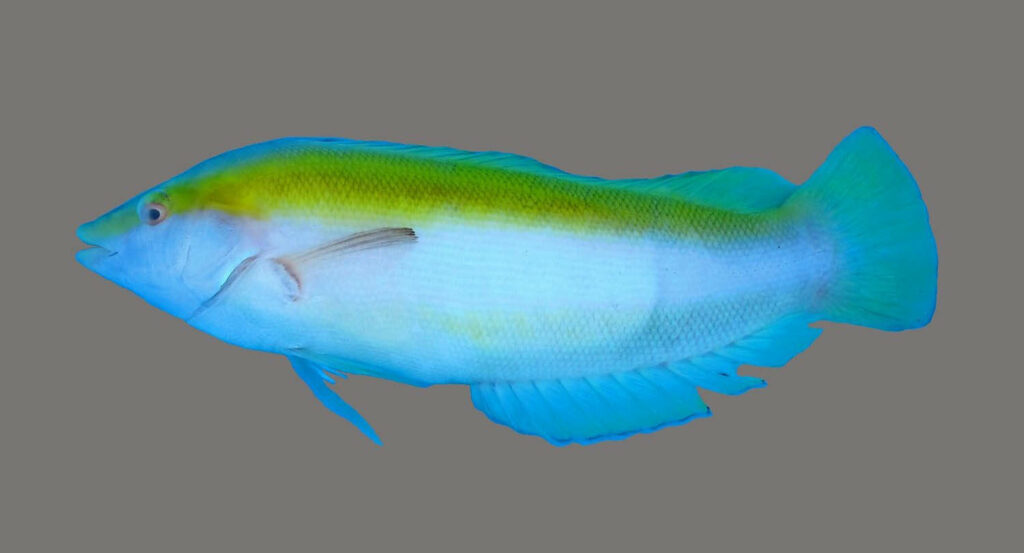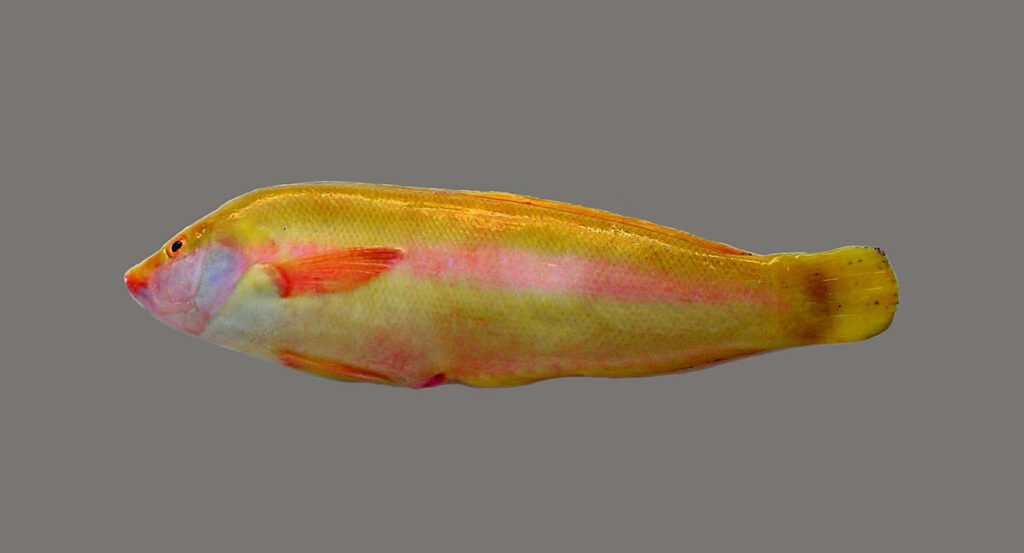
via FishTaxa
Coris flava is the newest wrasse species, and it’s a looker! The two specimens used for the species’ description were collected from the Mascarene Islands, due east from the island of Madagascar, in the southwestern Indian Ocean. Its name literally means “Yellow Coris”…which could be confusing to many aquarists! (Here is a case where using the scientific species name (“flava”) definitely helps keep things clear.)
The authors, Ronald Fricke and Patrick Durville, note that this species is a rather unusual find. “This interesting [deepwater] specimen (initial phase) was collected in 2012 during deep fishing tests for the aquarium in Saint-Gilles-les-Bains, La Réunion. A second specimen was collected [earlier] in 2006 in the same area, at 200-250 m depth (Fig. 4) [see below]; unfortunately, the specimen was not preserved, but the photograph provides a record of the fresh colouration of the terminal phase. The species has not been seen since; as the former aquarium vessel is no longer available, there seems to be no chance to obtain additional specimens. The habitat is also difficult to sample, below diving depth, and between large rocks that make it nearly impossible to use fishing gear. As it is highly unlikely to collect additional material, we decided to go ahead with the description of this previously undescribed species.”

Given the remote collecting location and the depths at which this species was discovered, it’s extremely unlikely that we will see this attractive fish entering the aquarium trade anytime soon. Furthermore, the larger sizes of the two specimens utilized for the species description suggest that this is a “big” Coris species of the type that would most usually be considered for FOWLR (fish only with live rock) displays.
The Flava Coris Wrasse is probably not “reef safe” in most applications of the term. Enjoy knowing that Coris flava exists, but reef aquarists should stick with the more commonplace aquarium trade “Yellow Coris”, Halichoeres chrysus.
Wrasse fans can read the entire open-access species description at http://fishtaxa.com/index.php/ft/article/view/22-5/189





Bonjour ! Je suis prêt à recevoir un aquarium récifal, grâce à l’aide d’un Sponsor = Suivit entier du bac et de sa faune et micro-faune.Et toutes nouveautés.Ai possédés 3 aquariums marin il y a 25 ans.1 450 litres avec mérou miniata,1baliste odonus Niger,1 conspi,1 rascasse volitans et 1 echidna nébulosa. 1 250 litres avec coraux mous et durs vivants + 2 derniers bénitiers pêchés en Mer Rouge,1gramma loreto,1centropyge loriculus,1bispinosus,1bicolor,et étoiles Bernard l’hermite 1 arbre de mangrove et autres et 1 150 litres avec 1 couple de mandarins et 1 couple d’hippocampes.Merci pour toutes aides,car plus les moyens.